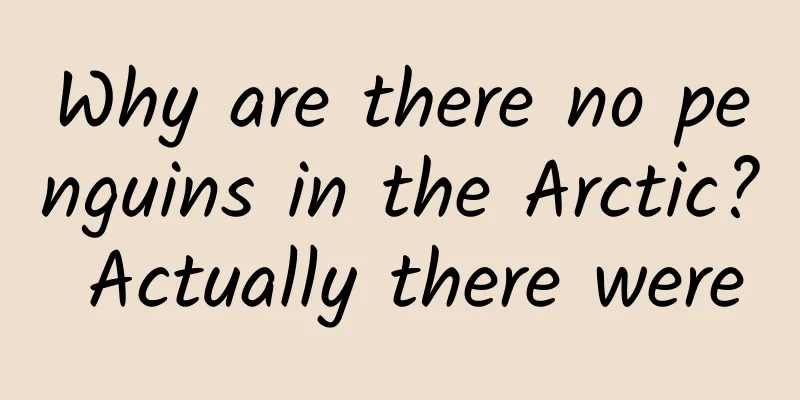Why are there no penguins in the Arctic? Actually there were

|
Why don't polar bears eat penguins? Everyone must be familiar with this brain teaser, and the answer is not complicated. There are no penguins in the Arctic, and similarly, there are no polar bears in the Antarctic. Polar bears and penguins There is nothing wrong with this answer in general, but you may not know that penguins from Antarctica have visited the Arctic with adventurers. Not only that, more than 100 years ago, there was a seabird in the Arctic that looked very similar to penguins and was also called the "Arctic penguin." Passengers who arrived at the North Pole on the Neptune In the 1930s, an explorer named Lars Christensen came to Antarctica, where he saw the world's largest penguin - the emperor penguin. It is worth mentioning that this guy is not only adventurous, but also proficient in hype and has a good sense of business. After seeing these penguins walking on the ice, Christensen immediately realized that there was an opportunity to make money. On the return voyage, he hid nine emperor penguins in the Neptune and brought them to the cold Lofoten Islands in northern Norway. As for why the Lofoten Islands were chosen, the reason is also very simple. Predators such as polar bears and arctic foxes cannot reach these islands, and it is generally safer to raise penguins there. It must be said that these emperor penguins spent a relatively comfortable time here. People built fences on the island. During the penguin nesting period, the authorities also issued a notice not allowing people to go to the island. The authorities issued a notice prohibiting people from going to the island In fact, Christensen did succeed. Due to extensive media coverage, these "Antarctic visitors" attracted widespread attention and brought him considerable income. Having tasted the sweetness, Christensen decided to make a bigger deal. In 1938, two years after the initial introduction of penguins, he again introduced 60 penguins from the Southern Hemisphere. In order to keep people fresh about penguins, he chose another two species of penguins this time, the Macaroni penguin and the Gentoo penguin. Local media reports on the introduction of emperor penguins The penguins were initially kept in pens, but as enthusiasm for the penguins waned, Christensen felt he was not making any profit. The penguins ate more than he earned, which made him restless. What else can they do if they can't afford to feed them? They just let them go. These travelers from the south are free. Although the climate in Norway is as cold as their homeland, these flightless seabirds suffered a tragic fate after being released into the wild. Although both the Antarctic and the Arctic are covered with ice and snow, their completely different geographical environments determine that they have completely different ecosystems. Antarctica is a land surrounded by ocean, while the Arctic is an ocean surrounded by land. In Antarctica, penguins have almost no natural enemies as long as they do not go into the water. Only underwater can they be hunted by seals and killer whales. In fact, in the distribution areas of penguins other than Antarctica, there are also no strong predators on land. Penguins, accustomed to a comfortable environment, suddenly come to the Arctic, of course, like sheep walking into the mouth of a tiger. At least, polar bears will not turn a blind eye to these slow-moving delicacies. According to reports, the last time people saw these released penguins was in 1954, and the penguins' short Arctic journey came to an end, just like the disappearance of the last great auk 110 years ago, which is a pity. The demise of the Arctic's 'penguins' In the 18th century, on a small island off the coast of Scotland, basalt cliffs sparkled in the sun, and the cold sea water kept beating. A large black and white bird floated in the waves, waiting for the right time to land. Although they had wings, they could not fly with their wings. These birds were called great auks. If they had not become extinct today, some people would definitely regard them as the "penguins" of the Arctic. The last great auk was killed in 1844 by three fishermen, who sold its body to a museum, a seemingly tragic but fitting end for a flightless seabird that was hunted to extinction by humans. About 5 million years ago, the Great Auk roamed the Arctic "land", long before the emergence of ancient humans. The Great Auk is about 75-80 cm tall and can weigh up to 5 kg. Its back is black and its belly is white. Its appearance and behavior are very similar to penguins, but there is no genetic relationship between the two. Because the great auk went extinct so early, modern scientists have never really observed its behavior and life in the wild, but based on the study of its relative, the razor-billed auk, scientists have a certain understanding of the behavior of this flightless seabird. The great auk's natural enemies may be killer whales, polar bears or white-tailed eagles, but almost none of these natural enemies will come to the island where the great auk lives. Of course, this is not absolute. During the Little Ice Age from the 16th to the 19th century, glacial activity was intense and the expanding glaciers made it easier for polar bears to approach the great auk, which caused a certain decline in the great auk's population. However, the great auk's adaptability allowed them to survive until humans entered their territory, which announced the tragic fate of this species. The great auks are found all over the island Archaeological and historical records show that humans have a long history of hunting the great auk. In prehistoric times, the Beothuks of North America, the Inuit of Greenland, and even the Neanderthals hunted the great auk; in the 16th century, European sailors began intensive hunting of the great auk in the fishing grounds of Newfoundland; in the late 18th century, the trade of great auk feathers further intensified the hunting, and the scarcity of the great auk further stimulated the desire of private and museum collectors. Finally, the great auk became extinct. There is no doubt that human hunting is an important reason for the extinction of the great auk, but some people also think that the number of great auks may have begun to decline due to environmental changes. However, a recent study on the great auk shows that even without the impact of environmental changes, human hunting is enough to drive this large bird to extinction. No need to blame others, humans are the murderer In a 2019 study published in the journal eLife, scientists studied the impact of human hunting on the extinction of the great auk by integrating genetic data and ocean current data, as well as historical hunting records of the great auk. Specifically, the researchers collected their remains throughout the great auk's distribution range, extracted DNA from them to sequence the mitochondrial genome, inferred the historical population dynamics of the species, and placed drifting pods equipped with GPS in its former distribution area to infer the potential migration routes of the great auk. Possible migration routes of the Great Auk If environmental changes had a significant impact on the Great Auk's survival, then this would be reflected in its genetic information. In fact, scientists found that the Great Auk experienced a population decline during the Pleistocene (more than 40,000 years ago), but then the Great Auk's population recovered and its effective population size has not experienced a significant decline since then, which means that the environment had little impact on its extinction. Furthermore, scientists estimated the possible impact of hunting on the extinction of the great auk. The results show that hunting 210,000 great auks and picking up less than 26,000 great auk eggs per year can lead to the complete extinction of the great auk in 350 years. The intensity of human hunting of the great auk may be far more than 210,000 per year. According to historical records, in a hunting activity near the coast of Funk Island, 1,000 great auks were caught and killed by two fishing boats within half an hour. The role of humans and environmental changes in causing species extinction has long been controversial, but there is no doubt that humans have an unshirkable responsibility for the extinction of the great auk, and blaming the environment is obviously an extremely irresponsible behavior. Aaron Thomas, a British Royal Navy sailor, once wrote: "If you come for their feathers, you don't have to bother killing them, just pluck the best feathers and let the poor 'penguins' drift." Birds have feathers, what's wrong with that? |
<<: What happens if you eat food that is one month past its expiration date?
>>: "Lone Moon" is a hit: What kind of comedic sparks can scientists and filmmakers create?
Recommend
Willows have sprouted. Can they be eaten? How? Where?
Today is Arbor Day, and it is early spring. The &...
Apple, you hurt me deeply, and you won't let me speak
[[131913]] Apple claims that its process for revi...
Law of Attraction Course + Wealth Attraction Course: Perfectly realize your dreams and wishes and make your life rich
Law of Attraction Course + Wealth Attraction Cour...
The information flow conversion rate increased by 174% year-on-year. How was it achieved?
The cost remained at 180 a few days ago, why did ...
5 strategies for membership marketing of knowledge payment APP
As people's copyright awareness gradually inc...
What makes Newton's laws true? Here's a simple way
Why do Newton's laws hold true? Here's th...
OECD: Using artificial intelligence in the workplace
Policymakers around the world are grappling with ...
Meizu Blue challenges Redmi: Is there still a chance in the thousand-yuan phone market?
There have been rumors that Meizu will launch a t...
It's outrageous to be cut by tulips
What is more likely to be disillusioned than Deng...
Marketing and promotion tips, no need to sell anxiety to reach 100,000+!
Many marketing strategies tell us that we must se...
This feature of Huawei's new flagship is super powerful!
Last night Beijing time, Huawei held a press confe...
5 methods to teach you how to effectively improve retention rate, TikTok and PUBG are using them!
This article will discuss in detail how to system...
How much does it cost to develop a mini program? How much does it cost to make a mini program?
With the rapid development of the Internet, mini ...
How to use Zhihu to effectively attract traffic and promote products?
What kind of platform is Zhihu? To study traffic ...
As of 2019, the global Android App download rankings
introduction It is difficult to rank the global A...









